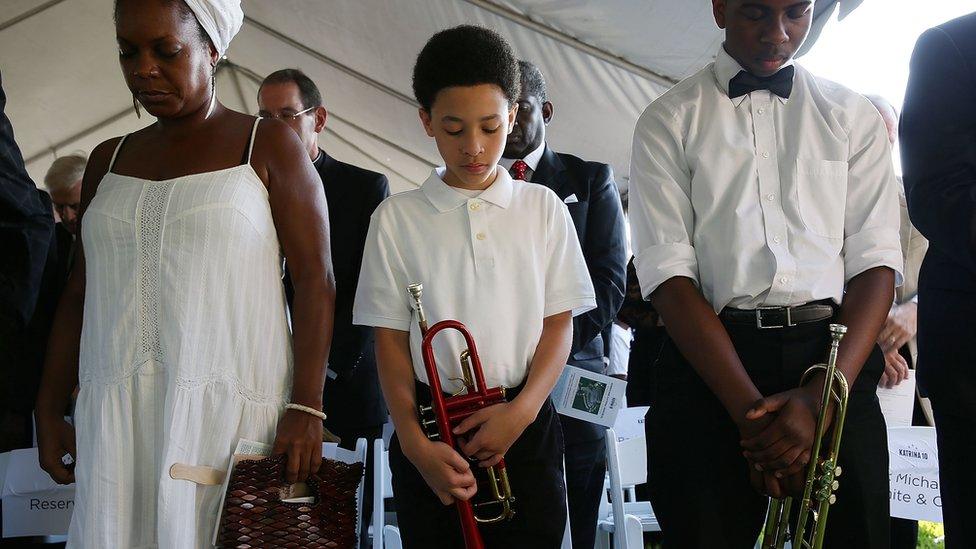Hurricane Patricia: Mexico awaits 'strongest ever' storm
- Published
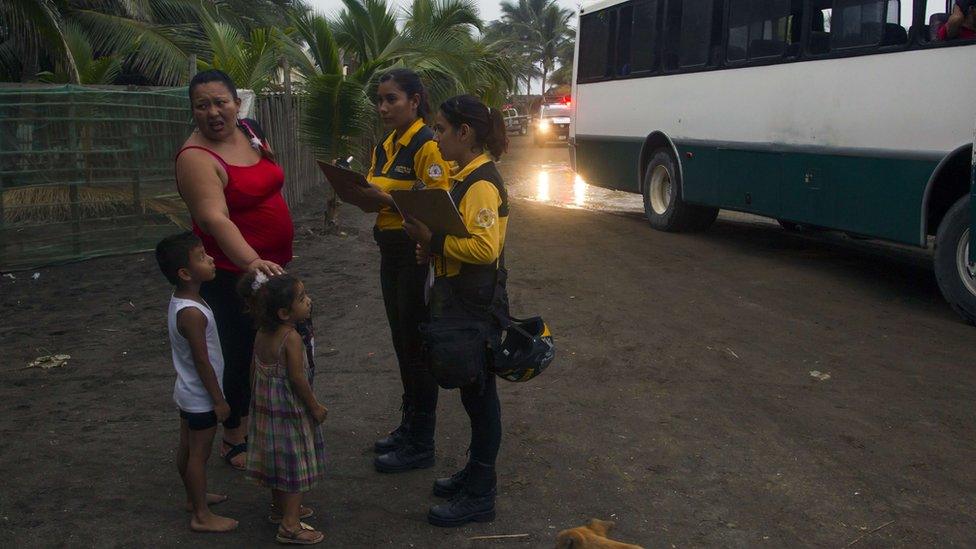
Mexican authorities have started evacuating people in vulnerable areas
The strongest hurricane ever recorded is bearing down on Mexico's Pacific coast, threatening a "potentially catastrophic" landfall.
Mexican authorities have begun evacuating residents ahead of the arrival of Hurricane Patricia.
The storm is comparable to Typhoon Haiyan, which killed 6,300 people in the Philippines in 2013, the World Meteorological Organization says.
A state of emergency has been declared in three states in Patricia's path.
The category five hurricane is expected to make landfall in the next few hours, with winds of 305km/h (190mph).
Video filmed in the port town of Manzanillo, external at 17:00 local time (22:00 GMT) shows trees bending in severe wind.
Hurricane Patricia: Key questions
The US National Hurricane Center said on its website, external: "Potentially catastrophic Hurricane Patricia should make landfall in Mexico in the next several hours."
The centre added that it was the strongest storm it had recorded in the eastern Pacific or the Atlantic.
It has already produced the third lowest barometer reading ever recorded - a pressure of 880 millibars at the centre of the storm - the centre reported.
BBC Weather's Tomasz Schafernaker charts hurricane Patricia's forecast path
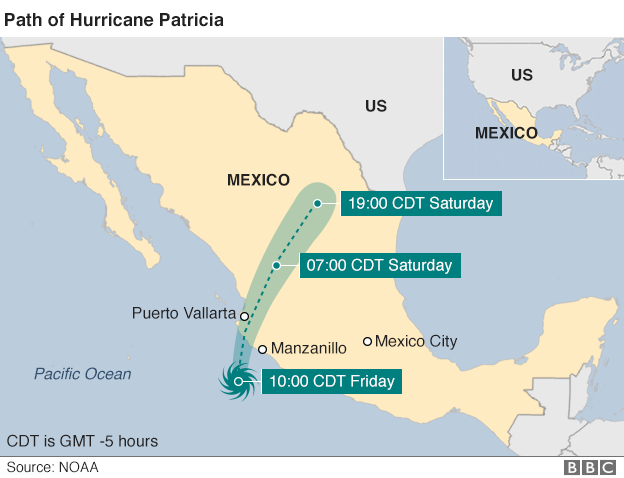
Some 400,000 people live in vulnerable areas, according to Mexico's National Disaster Fund.
The hurricane, which will bring torrential rain, could trigger flash floods and mudslides, the US centre said.
What makes Hurricane Patricia so deadly?
It also warned of potential flooding from the sea and destructive waves.
The hurricane's winds are strong enough "to get a plane in the air and keep it flying", World Meteorological Organization spokeswoman Claire Nullis said.
BBC Earth explains: What is a hurricane?
According to forecasters, Patricia will make landfall in the western state of Jalisco, home to the resort town of Puerto Vallarta, which could lie directly in its path.
Police patrols in the resort urged people to leave the shorefront for safer areas at least three blocks inland, while loudspeakers ordered hotel residents to evacuate.
The town's airport, along with two others in the path of the storm, were closed.
Schools have been closed in Jalisco, Colima and Guerrero states.
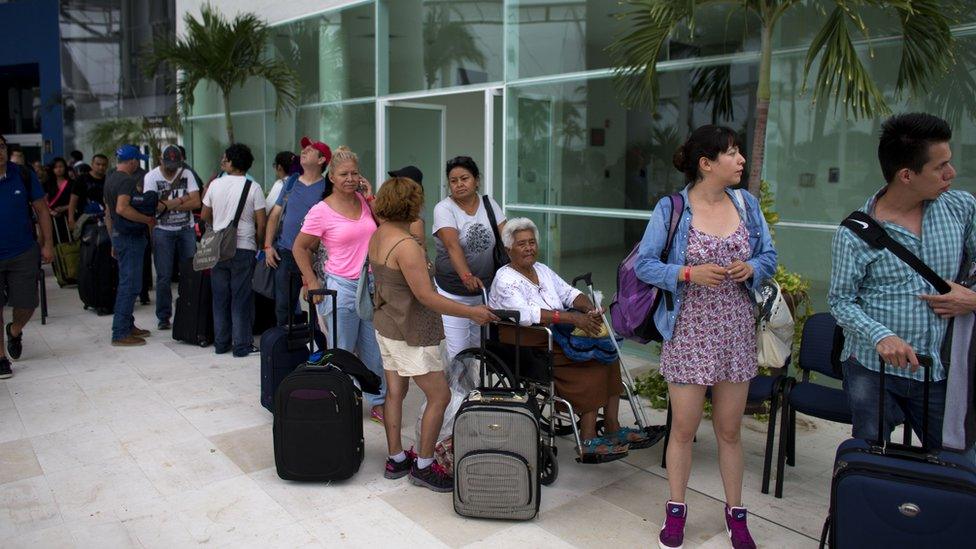
Tourists queue for buses in Puerto Vallarta after being told to leave their hotels
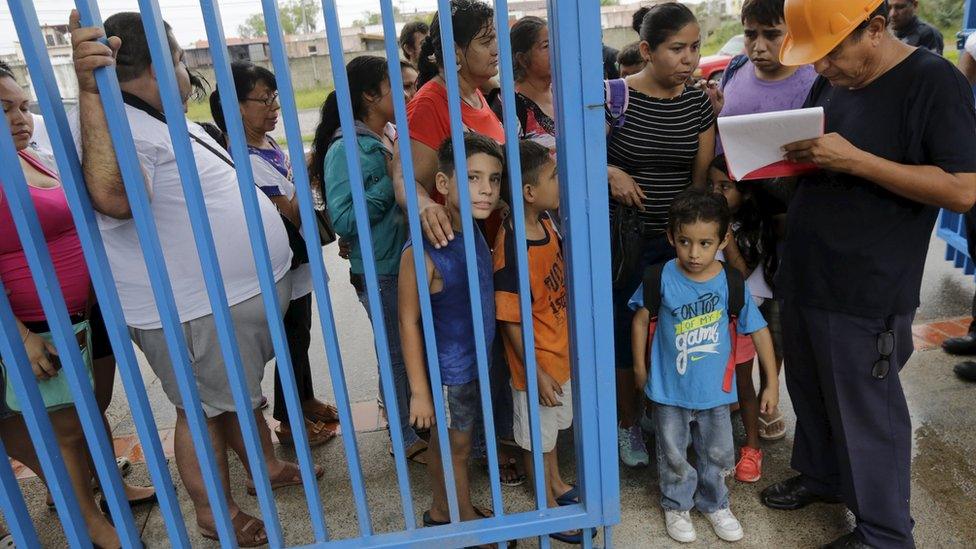
Puerta Vallarta residents have been evacuated to shelters like this one at the town's university
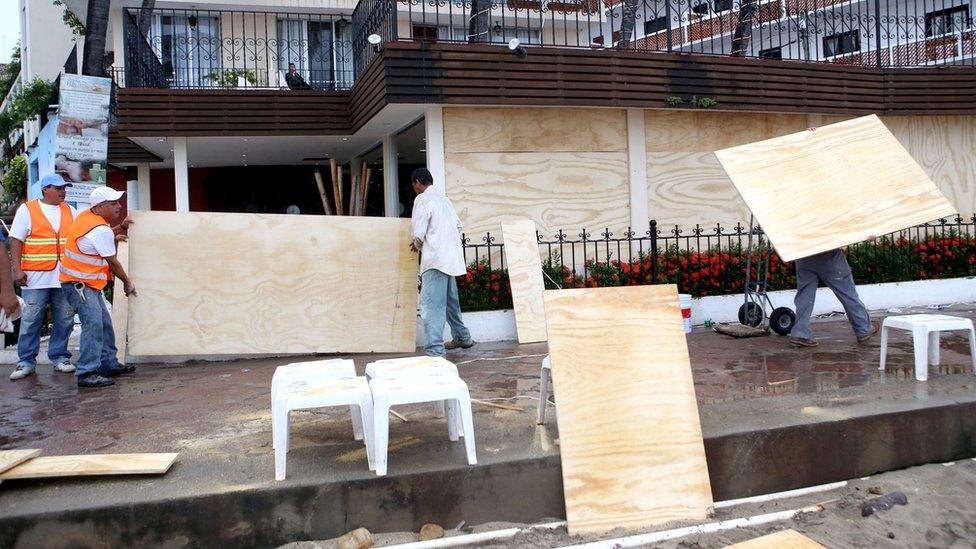
People have been preparing for the storm's arrival by trying to protect their homes
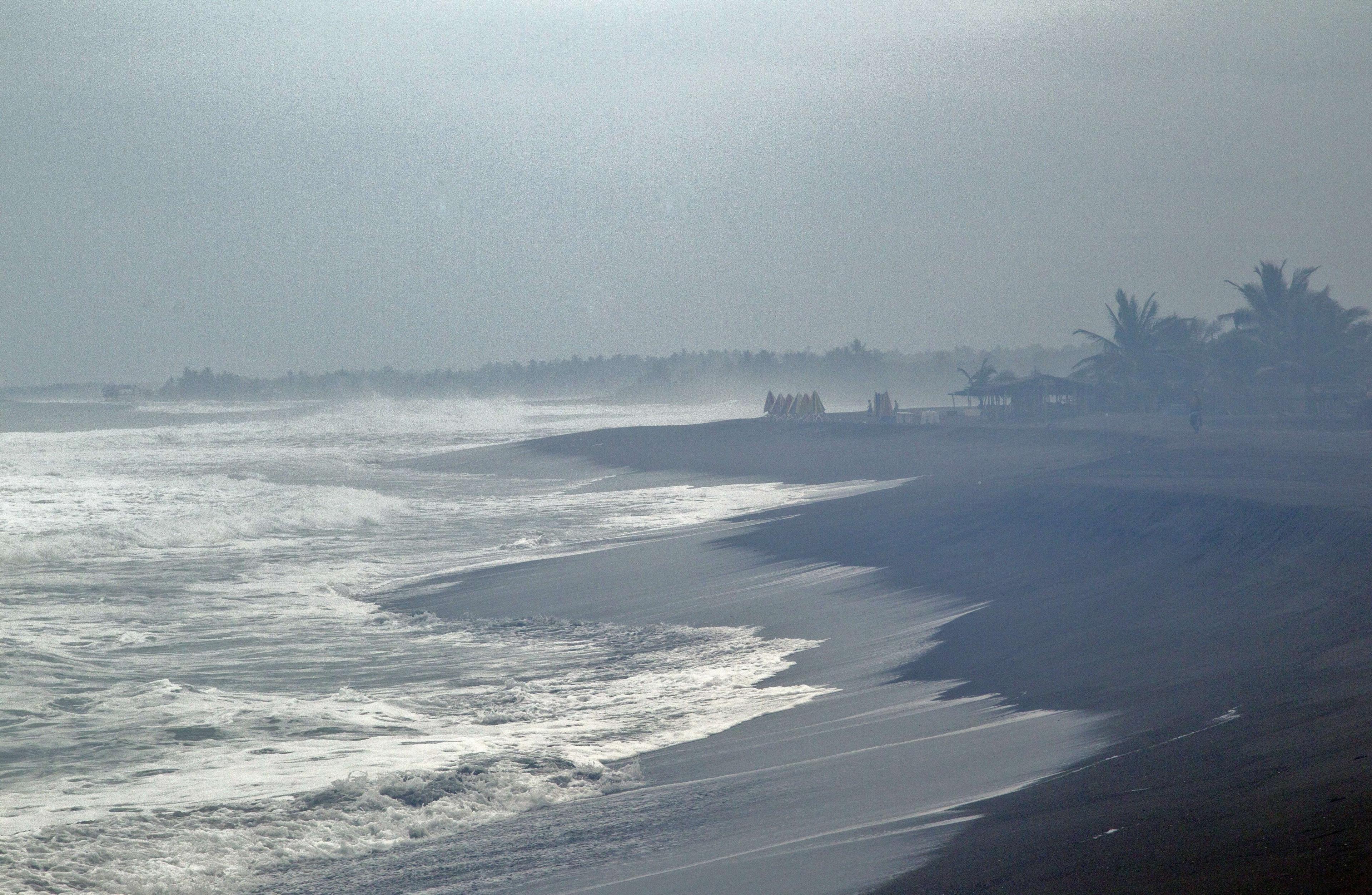
Forecasters have warned of potentially destructive waves
Shop owners in Manzanillo, a major port in neighbouring Colima state, have boarded up windows.
"[It's] better to be safe than sorry. Hurricanes are unpredictable," furniture store manager Enrique Esparza told AFP news agency.
Residents have also been stocking up on food and other supplies.
Anthony Caswell, from Save the Children, said that the charity was "very worried" about the storm
Heavy rains often lead to flooding in the town, said Alejandra Rodriguez, who was shopping at Wal-Mart in Manzanillo with her brother and mother.
"It ends up like an island," she said.
Some rural areas are prone to landslides and flooding. The government has warned that ash from the nearby Colima volcano, which has become increasingly active this year, could combine with heavy rainfall to trigger huge mudflows.
Mexico has to deal with tropical storms arriving from both the Pacific and Atlantic oceans at this time of year.

Some of the most powerful storms in recent years
October 1979: Typhoon Tip - largest and most intense tropical cyclone ever recorded with wind speeds of 305km/h (190mph), killed 99 people in its path across the Pacific, mostly in Japan
August 1980: Hurricane Allen - strongest Atlantic hurricane by wind speed, with sustained winds of 305km/h, caused nearly 300 deaths in Haiti and severe damage in the US state of Texas
April 1991: Bangladesh cyclone known as 02B - at least 138,000 died and up to 10 million made homeless after a 6m storm surge
October 1991: Odisha or Paradip cyclone - the strongest ever recorded in the northern Indian Ocean, killed about 10,000 people, mostly in India
August 2005: Hurricane Katrina - killed at least 1,836 people after striking US states of Louisiana and Mississippi and was the costliest storm in history, causing $81.2bn in damage (with wind speeds of 280km/h)
October 2005: Hurricane Wilma - most intense tropical cyclone in the Atlantic basin with wind speeds of 295km/h, killing 87 people on its path through the Caribbean and Gulf of Mexico
November 2013: Typhoon Haiyan - the strongest storm recorded at landfall, with one-minute sustained wind speeds of 315km/h, it devastated parts of the Philippines, killing at least 6,300 people
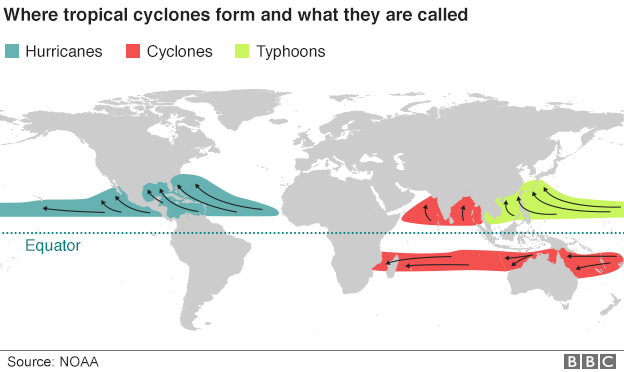
Hurricanes, typhoons and cyclones are all part of the same weather phenomenon but different names are used depending on where the storms are formed. Hurricanes form east of the International Date Line, while typhoons and cyclones form to the west.
- Published24 October 2015
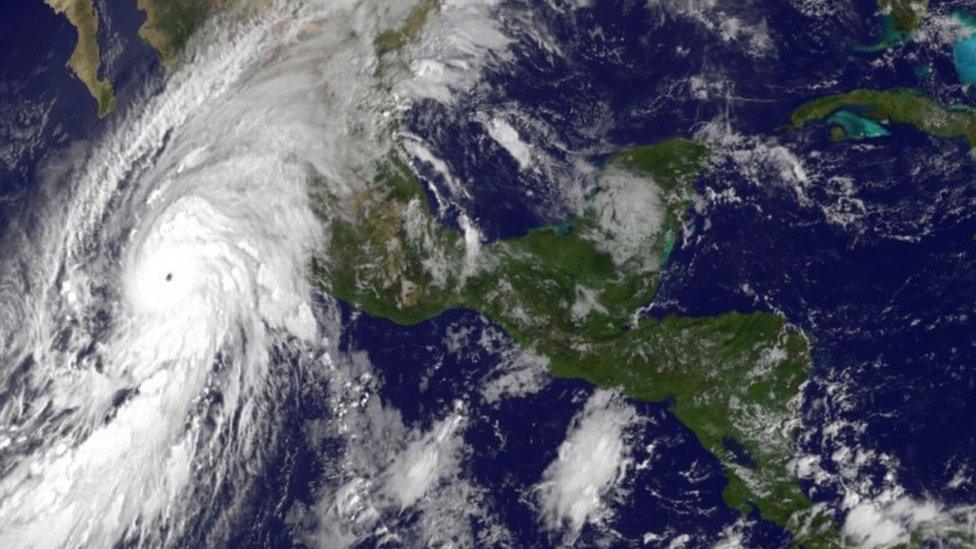
- Published30 August 2015
